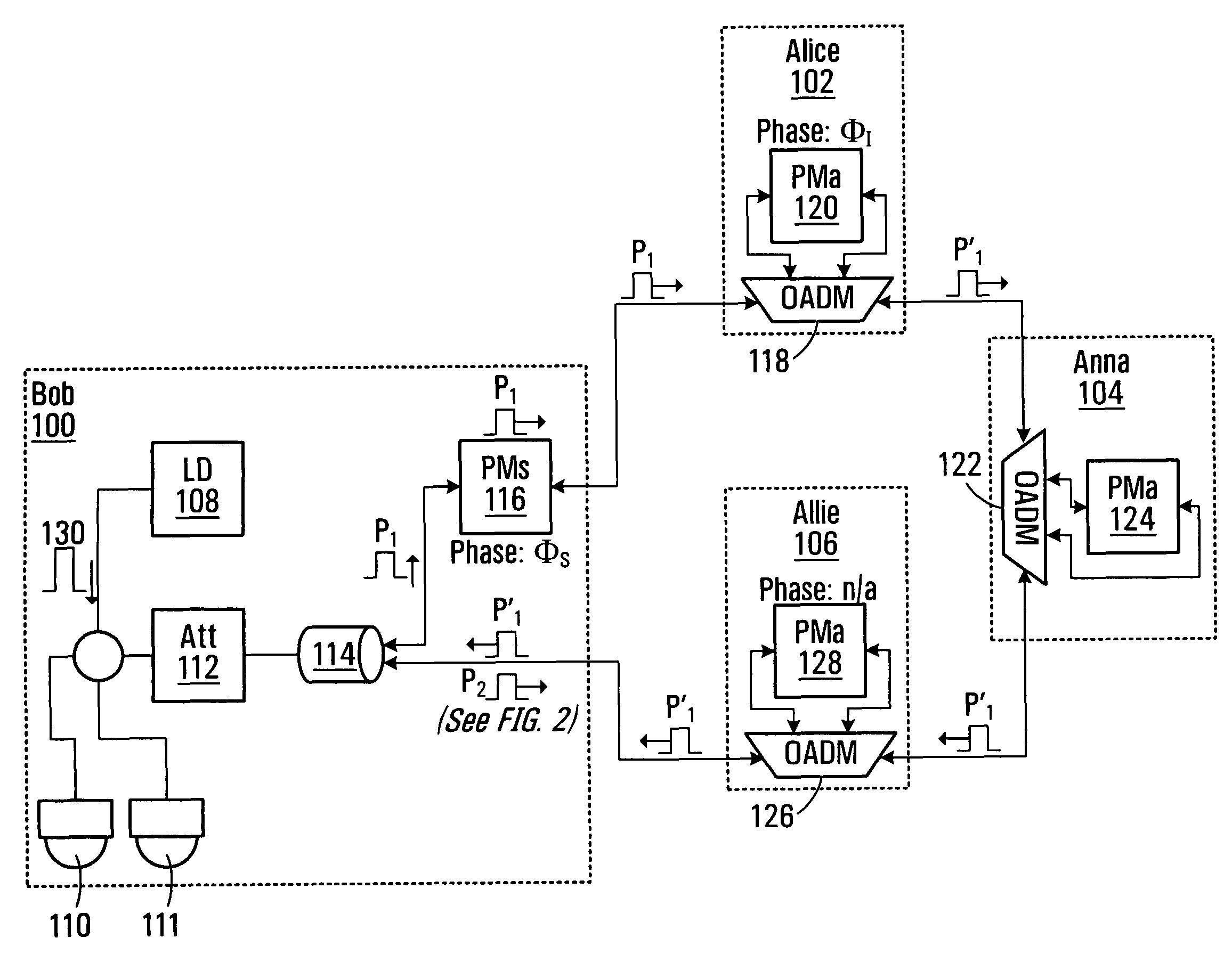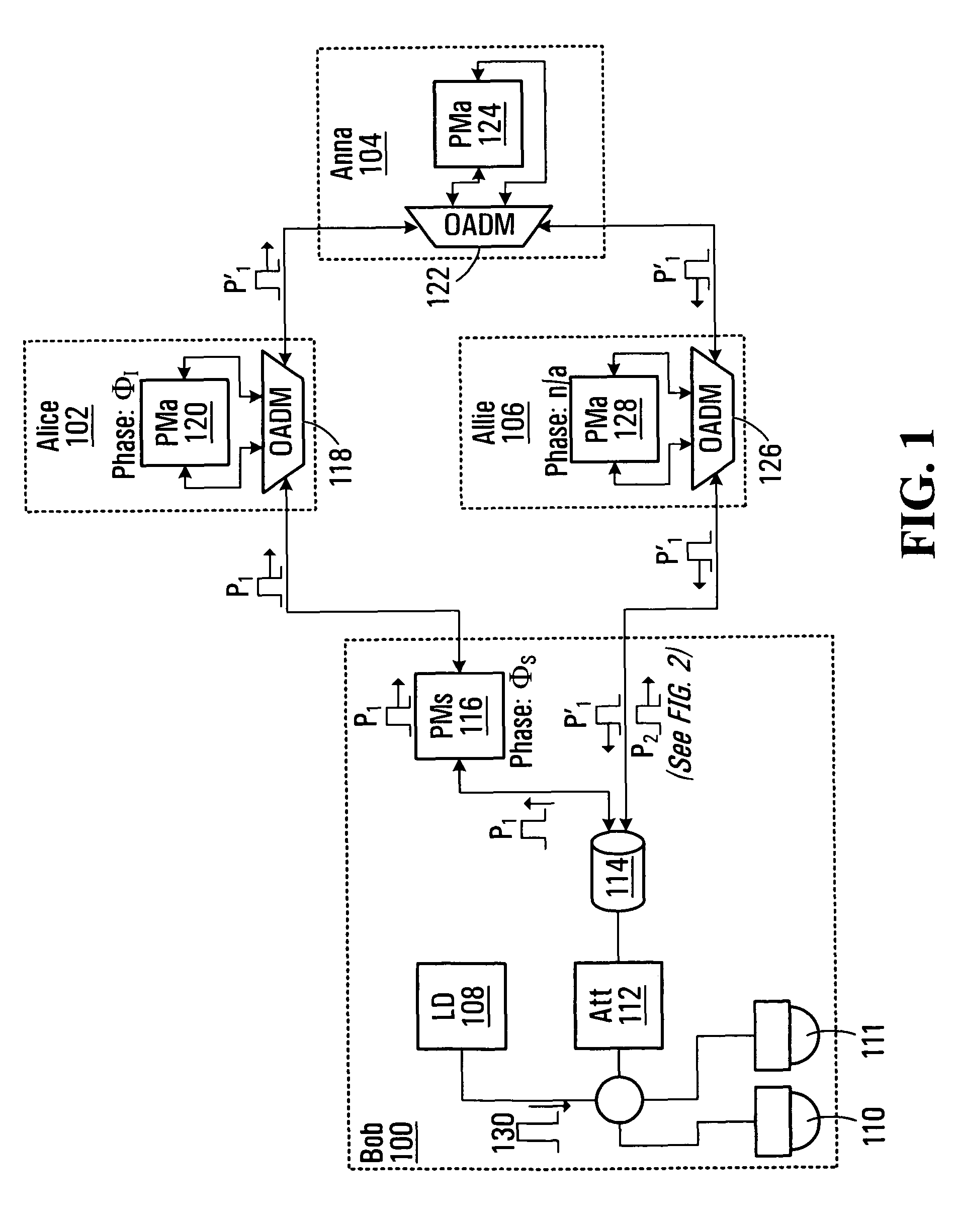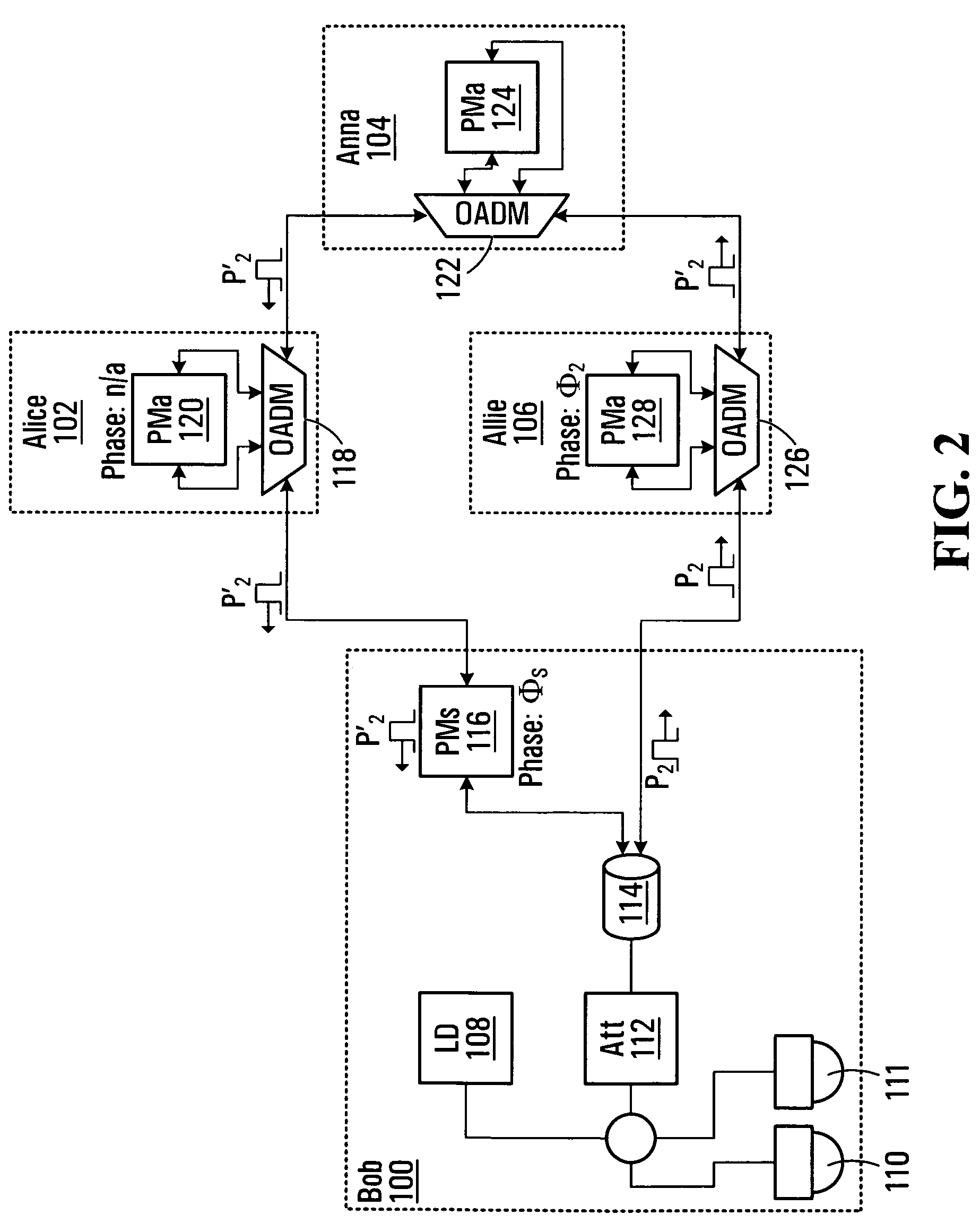Any-point-to-any-point (AP2AP) quantum key distribution protocol for optical ring network
a quantum key and optical ring network technology, applied in the field of network communication, can solve the problems of difficult reverse calculation, difficult calculation, and difficulty in computing x given f(x) for the computer, and achieve the effect of reducing the level of security provided by public key encryption, and improving the security of public key encryption
- Summary
- Abstract
- Description
- Claims
- Application Information
AI Technical Summary
Benefits of technology
Problems solved by technology
Method used
Image
Examples
Embodiment Construction
[0019]FIG. 1 illustrates an optical ring network with a plurality of nodes, including a quantum enabler node (hereinafter referred to as “Bob”) 100, a first potential quantum participant node (hereinafter referred to as “Alice”) 102, a second potential quantum participant node (hereinafter referred to as “Anna”) 104, and a third potential quantum participant node (hereinafter referred to as “Allie”) 106. Bob 100 includes a photon source such as a laser diode 108, a detection unit (including a detector 110 triggered by a pulse affected with constructive interference and a detector 111 triggered by a pulse affected with destructive interference), an attenuator 112, a coupler (and / or beamsplitter) 114, and a phase modulator PMs 116. Each of Alice 102, Anna 104 and Allie 106 includes a respective Optical Add / Drop Multiplexer (“OADM”) 118, 122, 126 and a respective phase modulator PMa 120, 124, 128.
[0020]Bob 100 functions as a Quantum Key Distribution (“QKD”) enabler for pairs of quantum...
PUM
 Login to View More
Login to View More Abstract
Description
Claims
Application Information
 Login to View More
Login to View More - R&D
- Intellectual Property
- Life Sciences
- Materials
- Tech Scout
- Unparalleled Data Quality
- Higher Quality Content
- 60% Fewer Hallucinations
Browse by: Latest US Patents, China's latest patents, Technical Efficacy Thesaurus, Application Domain, Technology Topic, Popular Technical Reports.
© 2025 PatSnap. All rights reserved.Legal|Privacy policy|Modern Slavery Act Transparency Statement|Sitemap|About US| Contact US: help@patsnap.com



